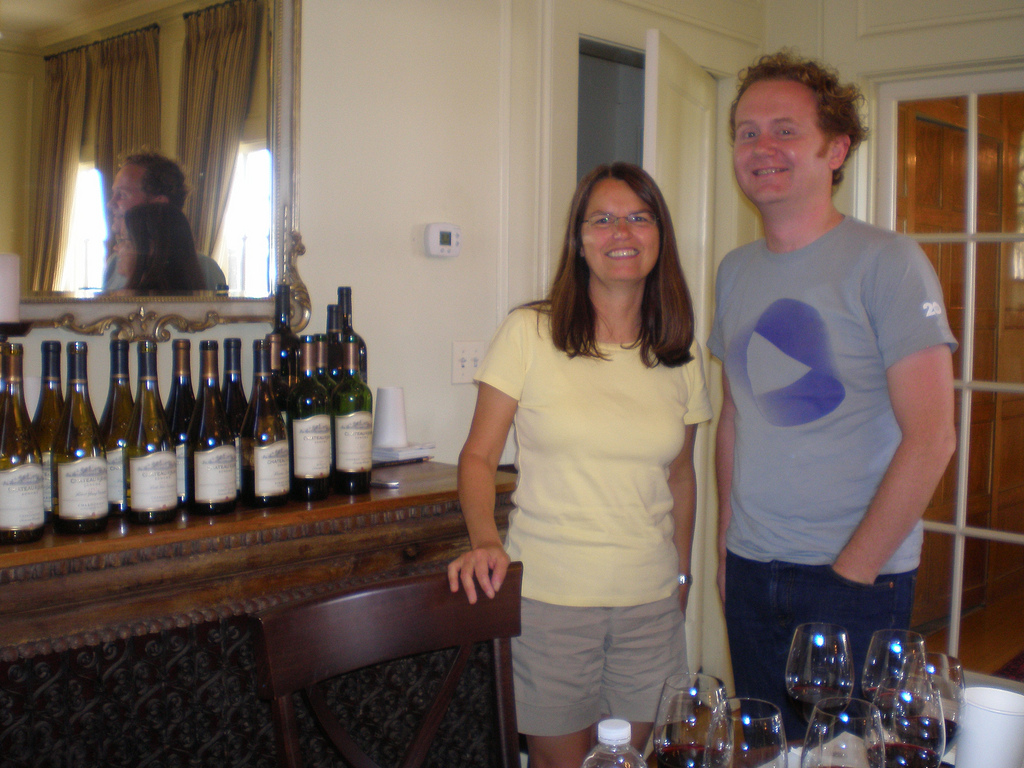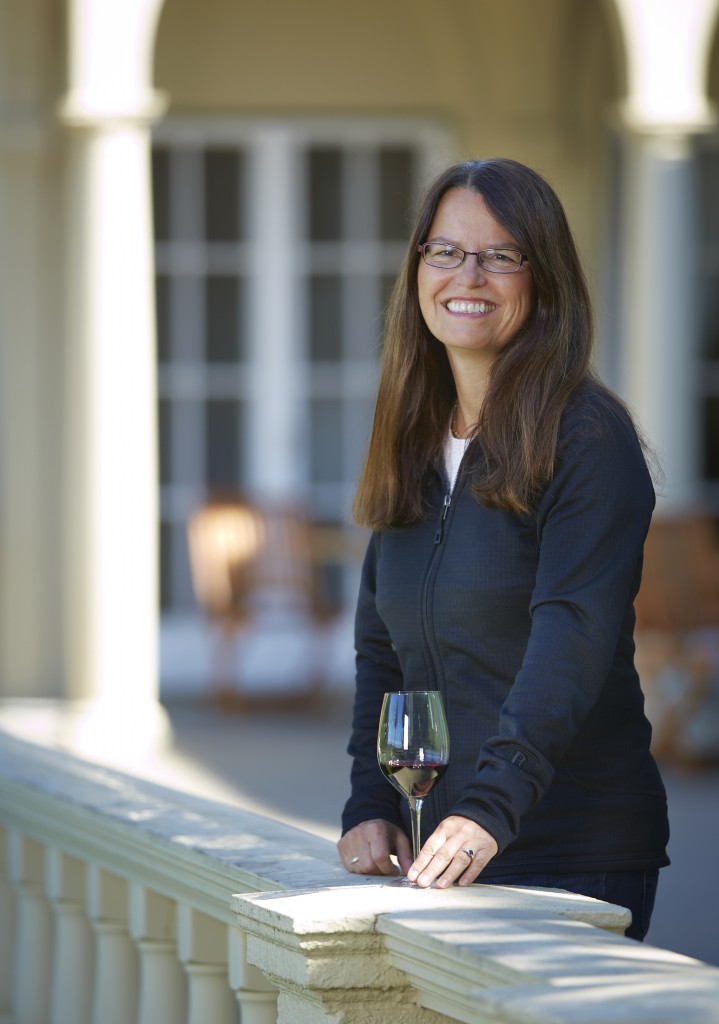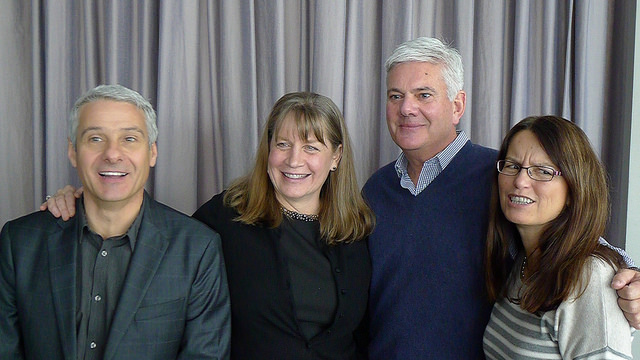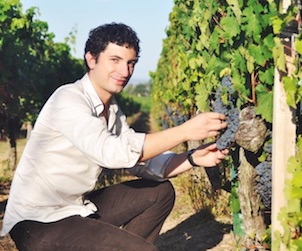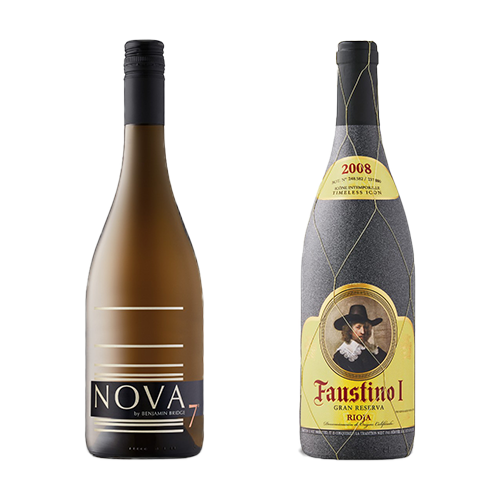This week we feature an exclusive extended interview with a lady who has been making wine at Sonoma winery Chateau St. Jean for 36 years… yes, you read that correctly… 36 years!
The most amiable Margo Van Staaveren gave us one of the most in-depth interviews imaginable. Thank you so much Margo.
Good Food Revolution: So Margo, you have been at Chateau St. Jean since way back in 1979… almost straight after college, with a harvest at Beringer in the interim. An awful lot has happened in the world of wines, specifically Californian wines, throughout your years there.
What major changes have you observed in Californian wine over this extensive period in time?
Margo Van Staaveren: There have been changes in every aspect of the world of wines. We grow grapes differently now with different clone/rootstock combinations and much more site specificity for each variety. We handle grapes and wine in the winery more gently than ever before and our focus is on balance in each wine. And yet, the richness and expressiveness of California wines we enjoyed in the ‘70’s continues through to today.
GFR: And how would you speak to the evolution of the wines of Chateau St. Jean and your winemaking philosophies and style over this same period?
MVS: In their youth, I think the wines we made in the ‘70’s were more extracted and took longer in the bottle to realize their full enjoyment. Balance between fruit extract and structure as the wine is made is our focus now. Our intent is to be very genuine with each variety and location the fruit comes from and to represent that in the wine.
GFR: How would you describe the Chardonnays you made back in 1979 compared to your most recently released vintages? Would it be fair to say, as an outside observer, that there has been a considerable change in the style over this time? What would you put this down to?
MVS: We have the good fortune to work with some of the same vineyards that we started with in 1975, such as the Robert Young Vineyard and Belle Terre Vineyard in Alexander Valley. Our style with Robert Young is very much the same as it always was – it’s a barrel-fermented, non-malolactic Chardonnay. For me, this style celebrates the rich texture that the vineyard provides. With Belle Terre, we started out non-ML, but later introduced ML into the wine for added mouthfeel. We’ve also been able to incorporate additional clones in the Belle Terre blend. Overall, I think the elegant style of our Chardonnays has persisted through the decades even as some of the vineyards we work with have changed.
GFR: And how about your reds, say your earlier vintages of Cinq Cepages compared to your current 2011 release?
MVS: Cinq Cepages has always been a layered wine with the elegant house style of the Chardonnays. The 2011 is unique in that it’s the first (and only) blend to have less than 75% Cabernet Sauvignon (it’s 52%). This shift in the blend was in response to the very cool, wet vintage we experienced in California in 2011. We had less fully mature Cabernet Sauvignon to work with and more mature Merlot, so this blend is higher than usual in Merlot (39%). The cool season gave us very fine tannins. Our previous and subsequent blends are typically more fruit forward and structured wines.
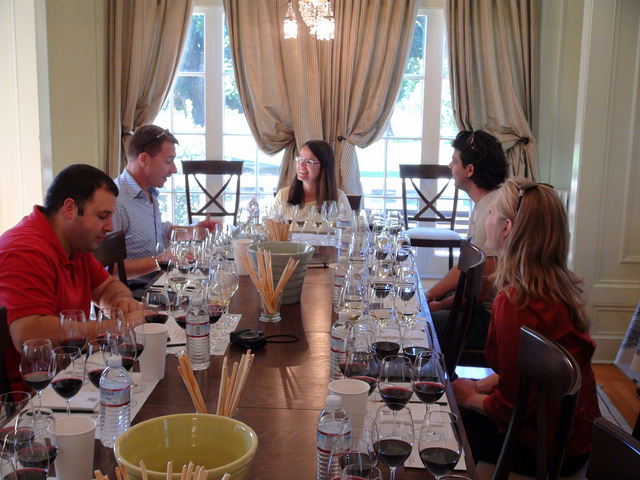
Margo leads a group of Canadian wine writers through an exhaustive tasting of the Chateau St. Jean range.
GFR: If we were to focus specifically upon Sonoma County, how do you feel the wines of the region are perceived both at home and abroad?
MVS: Locally, Sonoma is like any other wine region – very loyal to wines of the area. I think, though, that the locals are much like the rest of the US and abroad in that they might not realize the amazing diversity Sonoma offers. Our sub-appellations have such different characteristic in climate, soil and elevation allowing many different varieties to excel here. Oftentimes folks know our sub-appellations, such as Russian River Valley and Alexander Valley, without even knowing they’re part of Sonoma. I think we’re most known for our Chardonnay, Pinot Noir and Zinfandel and fewer are aware of our terrific areas for Cabernet Sauvignon.
GFR: What typifies the whites and the reds of the region in you mind?
MVS: Because we have so many diverse sub-appellations (16 at present), it’s difficult to summarize the region as a whole, but I find the wines generous in fruit character and texture. These are backed by a very present structure throughout as we are a cooler region overall retaining bright acidities.
GFR: Upon the rare occasions I have had the opportunity to taste some of your Pinot Noirs I have been quite delighted with their personalities. How do you enjoy working with this grape in the Russian River, Sonoma Valley, and the Sonoma Coast? and do you have a favourite area to source your fruit from? In your mind what does each sub-region bring to the glass?
MVS: Russian River Valley yields very generous Pinot Noir. I love the spice, plum and voluptuousness of the wines. Sonoma Valley Pinots tend to be a bit firmer, but as it’s warmer, they’re very rich. Dark berries and some earthiness are often found. The Sonoma Coast Pinots are very focused with tight structures and dark, lovely raspberry. It’s difficult to pick which area I like best, so I make wine from all three!
GFR: Much criticism is often levelled at Californian Pinot Noir by Old World wine snobs, but personally I don’t think that they know what they are talking about. For me the best Californian Pinot Noirs can be just as expressive and enjoyable as those of Burgundy, but to compare the two side by side is like comparing apples and… well… bicycles. I’d love to hear your thoughts on this eternal question…
MVS: I agree that comparisons are often futile. I don’t think this just resides in comparing Pinot Noir, but with any variety. For me, the goal is to make a wine that truly represents the place it’s grown. Each area has its own expression to be enjoyed.
GFR: There seems to be a renewed interest amongst wine enthusiasts for well-crafted Chardonnays once again. I’ll admit that I became caught up in the ABC (Anything But Chardonnay) mob mentality myself, something that I am now a little ashamed of actually… What do you feel the wine drinker is looking for these days when it comes to premium Chardonnay?
MVS: Not so long ago, I would have answered that consumers wanted lower oak, lower ML Chardonnays, perhaps coming off the ABC movement. However, there are very popular bottlings in the market that take both oak and ML to the limit. I think there’s room for both extremes and many styles in between.
No matter what style is elected, you have to listen to your fruit. If making a big impact style, greatest success comes with well concentrated fruit. Using areas that provide Chardonnay of less intensity just leaves you with the artifact, not the fruit to support it. The same can be said with wines of lower oak or ML. When Chardonnay is stripped bare, there needs to be nuances in the fruit to provide interest. I think this is best achieved through the use of interesting clones. Overall, I think the majority of Chardonnay drinkers want balance – much like they would in any variety.
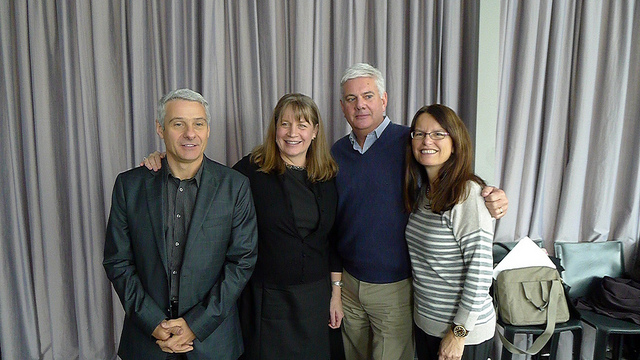
Margo with fellow Winemakers from the Treasury Wine Estates portfolio: Christophe Paubert (Stags’ Leap), Laurie Hook (Beringer), and John Priest (Etude)
GFR: Speaking of contemporary Chardonnay production… where do you stand on the whole “minerality” vs. reductive winemaking argument? Are we seeing a flood of perhaps overly reductive Chardonnays to satiate the palates of the thirsty hordes looking for this elusive “minerality”? a term I was recently advised by a Master of Wine never to use again BTW.
MVS: While we don’t practice reductive winemaking here, I think there are some interesting wines out there. Again, though, this style of wine needs to be supported by the fruit selected. In my experience, this works best with cool climate fruit where the acidity present is sufficient to align with the style. And I cheat – I say a wine smells or tastes ‘minerally’.
GFR: You started at Chateau St. Jean as a lab technician… how much time do you spend in the lab these days, and for you, how important is the appliance of science to the art of winemaking? not only in the lab, but with the advances in winemaking technology over the decades?
MVS: I pass through the lab often, but they won’t let me push any buttons anymore . While I don’t run any of the analysis, I do pick up the pipette and cylinder to make trial blends. Laboratory analysis has a definite part in supporting winemaking to back up our assumptions and alert us to issues that could arise. Science also supports the innovations in viticulture and equipment used in winemaking. So it plays a critical role, but as we always say here, in the end, taste wins.
GFR: Do you happen to have a favourite piece of equipment at this point in time? What single piece of technology do you feel most helps you make better wines?
MVS: On the bigger equipment side, our shaker table to move grapes into the destemmer has impacted our wine texture by not breaking up stems and creating stem ‘jacks’. It gently transports the grapes and doesn’t grind up the clusters like our older style auger. But my favorite and most important single piece of winery equipment is my wine thief!
GFR: And of course we have seen some major changes in vineyard management over the past thirty years. How much time do you spend in your estate vineyards and with your growers? And how would you describe the Chateau St. Jean vineyard philosophy today as compared to when you began with the house?
MVS: The relationship with our viticulturalists and our growers is critical. During the period leading up to harvest and harvest itself, I spend about two-thirds of my time out in the vineyard. Grape sample analysis is very helpful, but there’s no better indication of the condition of the vineyard or the ripeness of the fruit than seeing it first hand and tasting the fruit directly.
During the balance of the season, I visit the vineyard during critical times. We also taste the wines from the last season with the viticulturalists and growers to discuss the harvest and share our thoughts on the wines. This mutual feedback sets us up for a successful next harvest. I can’t say our vineyard philosophy has dramatically changed though our views on trellising, water management, clones/rootstocks and site selection have evolved as our experience has deepened. Our philosophy to find vine balance for each site and our concern for long term vine health remains consistent with when we began.
GFR: You received your college degree in Fermentation Science. I’ve always wanted to ask you if you have ever made any beer, cider, sake, cheese, or kimchi? And if so, how did that/they turn out?
MVS: When I attended UC Davis, there wasn’t a separate degree in enology as it was wrapped into Fermentation Science. Enology has been separated out now. I did make beer while in college in our brewing classes, but never since that time. I stay pretty focused on wine!
GFR: I have recently been putting together a masterclass on the importance (or non-importance) of clones in winemaking? Some winemakers sing the praises of their clones, whist many others never even mention them… with some saying that it has more to do with the “terroir”.
I’d love to hear your thoughts on the topic and how clonal selection pertains to the production of your Chardonnays.
MVS: While site and vineyard management can at times mask clonal influence, I do stress the importance of clonal material. Cluster and berry size can vary which can result in greater or lesser concentration of flavor. The flavors themselves can vary from floral to citrus to tropical. In our Robert Young bottling, we’re using predominantly the Robert Young clone as the patriarch had the clone isolated back in 1989 when replanting was necessary due to phylloxera. This small clustered clone, originally from a Wente selection, produces rich, dense flavors with a distinct lemon oil. It defines the identity of our single vineyard bottling. We use a variety of other clones in our other Chardonnays including Dijon, Entav and the widely planted clone 4.
Clonal selection in Pinot Noir is equally important and we’re planting a wider variety of clones in Cabernet Sauvignon in Sonoma with I’m very excited about. It’s one way to create more complexity in a blend.
GFR: Today alcohol levels still seem to be quite important for the wine enthusiast, and there does still seem to be this drive for lower alcohol wines, something that has allowed some quite harsh criticism to be aimed at Californian wines (as well as those from a few other places in the world).
I’ve always felt that alcohol is only one component of the entire picture, and more important is the equilibrium that one finds in the glass. How do your counter the criticism that Californian wines are more often than not too alcoholic for today’s palate?
MVS: I know I keep mentioning balance (your equilibrium above), but that really is what I’m looking for in tasting grapes or tasting wines. California is usually blessed with warm vintages where sugar accumulates quickly. To get the full maturity in the grape we’re looking for, we often end up at higher sugars which of course, results in higher alcohols. I do believe our concentrated fruit extract does balance that alcohol in most cases. Certainly we don’t set out to make high alcohol wines, but warmer wines are often a signature of the appellation.
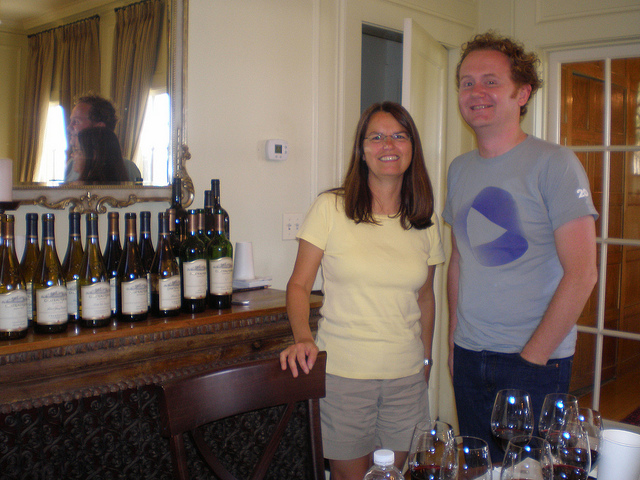
GFR’s Jamie Drummond with Margo back in 2010. How time flies!.. and look at that big red ginger face.
GFR: And then we have the subject of residual sugar in many wines the general pubic view as being dry… something that the wine press have been very happy to discuss over the past five years or so. I’d really like to hear your thoughts around this discussion.
MVS: This is one of the great dichotomies of wine consumers. While most would say they don’t prefer sweetness in classically dry wines, that’s often what they buy. While our wines are in a more traditional style, I think a broad selection is appropriate if there is demand for it.
GFR: The world of wine ratings has been incredibly generous to Chateau St. Jean over the years (and deservedly so). How do you personally feel about the wine rating system? While I can see the value of scores as a marketing tool, through my observations judging at wine competitions over the years, I often worry that some Winemakers make wines specifically to garner those ratings from very particular writers or media outlets, and therefore not necessarily making the best wine that they could from the vineyard… Oh, but then it all gets so subjective doesn’t it? Thoughts?
MVS: I agree, the world of wine scoring can be so baffling. In the end, you’re working with the fruit from the region you’ve sourced and again, need to listen to it. Making pleasing wines (to the critic or consumer) that showcase that region may or may not garner high scores, but preserves the integrity of the region (and the winemaker!). My goal is to make wines that bring people enjoyment. As for scores, I’ve been on both sides of the range – high and low – and I do know it’s far more pleasant on one side than the other!
GFR: I’m not one of those people who are always looking for the Next Big Thing, but I’d be interested to hear from you if there are any lesser-known varietals that you feel have tremendous potential in California, perhaps even at a niche market level?
MVS: I’ve been in the wine world long enough to know that the next big thing sometimes is quite surprising, so I dare not guess. Often it’s a new style instead of a new variety taking hold. For my part, I’d love to see more Grenache in California. I don’t make it at present, but I certainly enjoy drinking it!
GFR: Margo, thank you so much for your time, as I know our interviews are probably quite a bit longer and involved than most that you deal with!
MVS: Thank you for giving me a platform to share all my thoughts!

Edinburgh-born/Toronto-based Sommelier, consultant, writer, judge, and educator Jamie Drummond is the Director of Programs/Editor of Good Food Revolution… And he looks forward to making it back to Sonoma to taste with Margo once again in the not too distant future.

